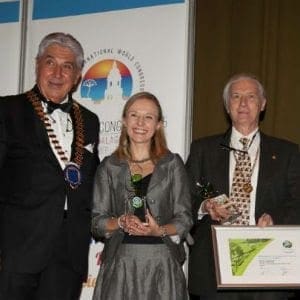 The 2015 Australian Tourism Labour Force Report, released today by Tourism Research Australia (TRA) has estimated that the tourism and hospitality sector will require an additional 123,000 workers by 2020, to meet the needs of a rapidly growing industry.
The 2015 Australian Tourism Labour Force Report, released today by Tourism Research Australia (TRA) has estimated that the tourism and hospitality sector will require an additional 123,000 workers by 2020, to meet the needs of a rapidly growing industry.
Tourism Accommodation Australia (TAA) said the report identified that there would be a need for 60,000 skilled positions, requiring a major lift in local recruitment and training, and a relaxation in temporary skilled migration provisions (457 Visas and working holiday visas) to ensure Australia’s tourism businesses had enough skilled workers to meet future demands.
The TRA report estimated that inbound travel would grow by 6% annually from 2015-2020, with the number of international visitors growing from the current 7.2 million to over 10 million by 2023-24.
The findings complement TAA’s Labour Force Trends in Accommodation Survey which concluded that ‘Limited applicants with sufficient skills and experience’ was the biggest factor contributing to skills shortages in the industry.
Australia is undergoing its most rapid period of hotel development, with over 70 hotels and some 10,000 rooms under construction or in advanced stages of planning.
The last Australian Tourism Labour Force Report was conducted in 2011, under the direction of then Tourism Minister, Martin Ferguson, who is now Chair of Tourism Accommodation Australia.
“Since 2011, the pace of development in the tourism and hotel sector has increased significantly and while some positive progress has been made in recruitment and retention, supply of skilled labour is not keeping up with demand,” said Mr Ferguson.
“The TRA survey identified a large increase in the proportion of businesses reporting skills deficiencies, growing from 50% of businesses in 2011 to 69% in 2015, and while NSW and Victoria reported the highest volume of skills shortages, all States and Territories were affected with Northern Territory and Western Australia particularly vulnerable to skilled labour shortages.
“The massive growth in hotel development will put particular strains on the industry because Australia is competing in an increasingly competitive world tourism market and there is a critical need to enhance service standards.
“It is important for the industry to ‘grow its own’ and invest in training and career development, and we need to place greater emphasis on attracting more mature aged, youth and Indigenous Australians into the industry.
“Since the last Tourism Labour Force report the rate of dependence on overseas workers has dropped from 13 per cent of the total workforce to 10 per cent, possibly reflecting some workers moving from the resources sector into tourism, but with such an unprecedented pipeline of new hotel development and with record international demand, it will be important for Governments to be flexible and allow temporary skilled workers when and where they are most needed.
“The industry must play their role in developing the skills base of the sector, and it is pleasing that TAA announced last week an industry-led Hotel Career Expo for 2016 to put the spotlight on the hospitality and tourism industry’s potential to provide long-term and dynamic career opportunities.”















